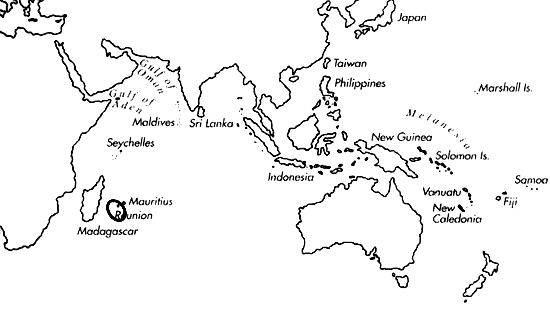Range: Known only from the type locality.
Description: Medium-sized and moderately light. Last whorl conical to ventricosely conical, outline slightly convex below shoulder and straight toward base. Shoulder subangulate to rounded, with a prominent edge. Spire of moderate height, outline slightly sigmoid. Maximum diameter of larval shell about I mm. First 4-7 postnuclear whorls tuberculate. Teleoconch sutural ramps slightly concave, with obsolete spiral striae. Last whorl with fine spiral ribs at base and spiral threads above.
| Shell Morphometry | ||
|---|---|---|
| L | -42 mm | |
| RW | 0.07-0.09 g/mm | |
| RD | 0.52-0.56 | |
| PMD | 0.82-0.86 | |
| RSH | 0.19-0.23 | |
Colour beige, with an inconspicuous narrow light brown spiral band just below shoulder edge. Aperture cream.
Habitat and Habits: In about 700 m.
Discussion: C. jeanmartini resembles C. ikeclai, C. scopulicola C. lani, C. smirna, and C. profundorum. C. ikedai differs in its more ventricose last whorl (PMD 0.81-0.84) with a sigmoid left side, its generally lower spire (RSH 0.16-0.21), rounded shoulder, and in the more distinct spiral sculpture on its sutural ramps. C. scopulicola has a somewhat broader, distinctly ventricose last whorl (PMD 0.77- 0.80) with a sigmoid left side, a rounded and rather indistinct shoulder, prominent spiral sculpture on its sutural ramps, and a pattern of brown axial flames and spiral bands; only its first postnuclear whorl is tuberculate. C. lani has a higher spire (RSH 0.25-0.29), a prominent spiral sculpture on its sutural ramps, and a brown colouration. C. snzirna (including similar shells from Midway Id., New Caledonia, and New Zealand area) attains larger size, has more pattern on its last whorl, and its spire is higher (RSH 0.21-0.30). C. smirna and allied shells also differ in the pronounced spiral grooves on their early teleoconch sutural ramps, and their indistinct shoulders. C. profundorum attains larger size and has a light brown aperture. Similarly sized subadult specimens of C. profundorum from New Caledonia differ in their angulate shoulder. However, these conchological differences are difficult to evaluate, because C. jeanmartini is base on only two specimens and nothing can be said about its intraspecific variability. We consider C. jeanmartini only provisionally a valid species.

C. jeanmartini range map
This section contains verbatim reproductions of the accounts of 316 species of Conus from the Indo-Pacific region, from Manual of the Living Conidae, by Röckel, Korn and Kohn (1995). They are reproduced with the kind permission of the present publisher, Conchbooks.
All plates and figures referred to in the text are also in Röckel, Korn & Kohn, 1995. Manual of the Living Conidae Vol. 1: Indo-Pacific Region.
The range maps have been modified so that each species account has it own map, rather than one map that showed the ranges of several species in the original work. This was necessary because each species account is on a separate page on the website and not confined to the order of accounts in the book.